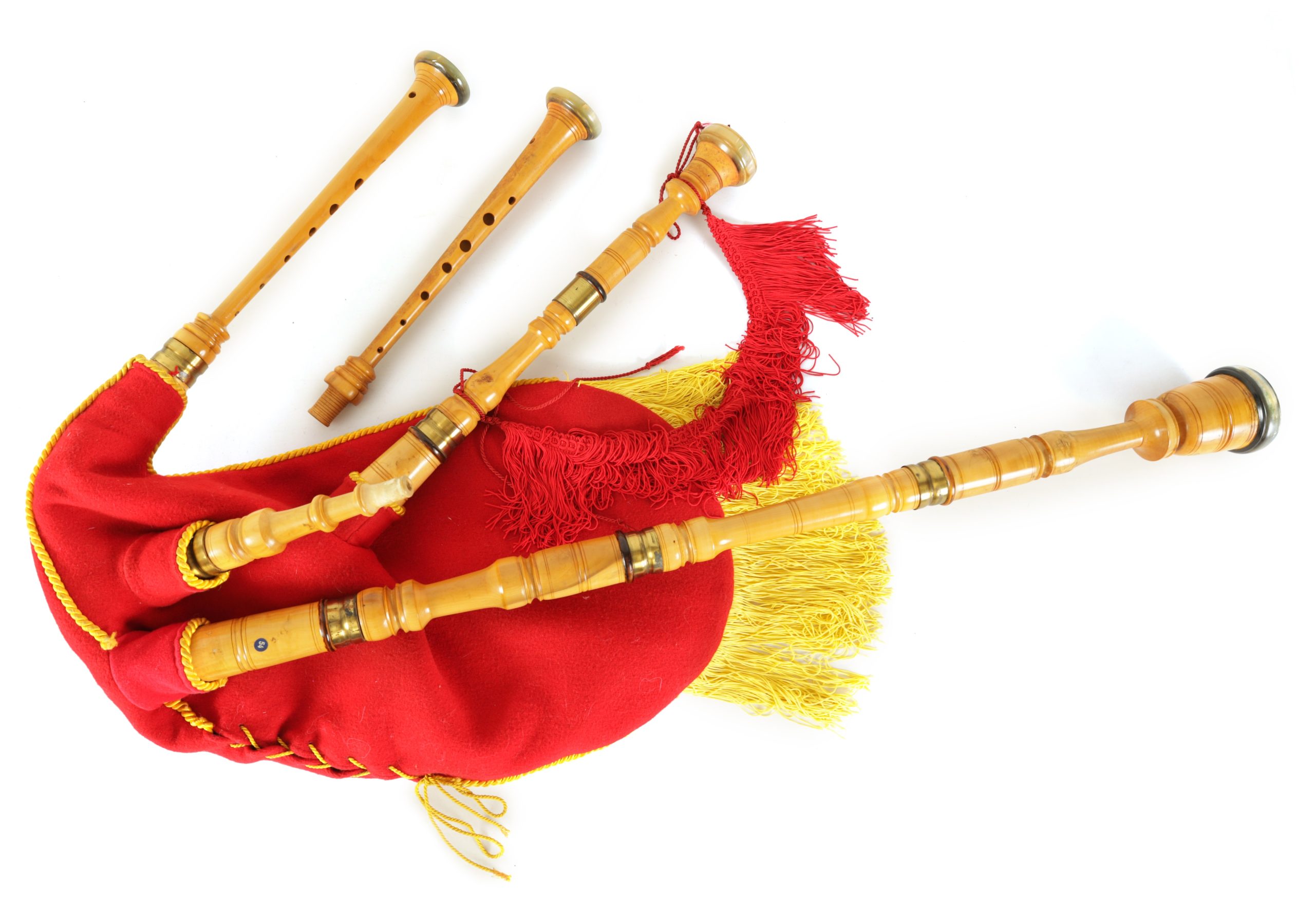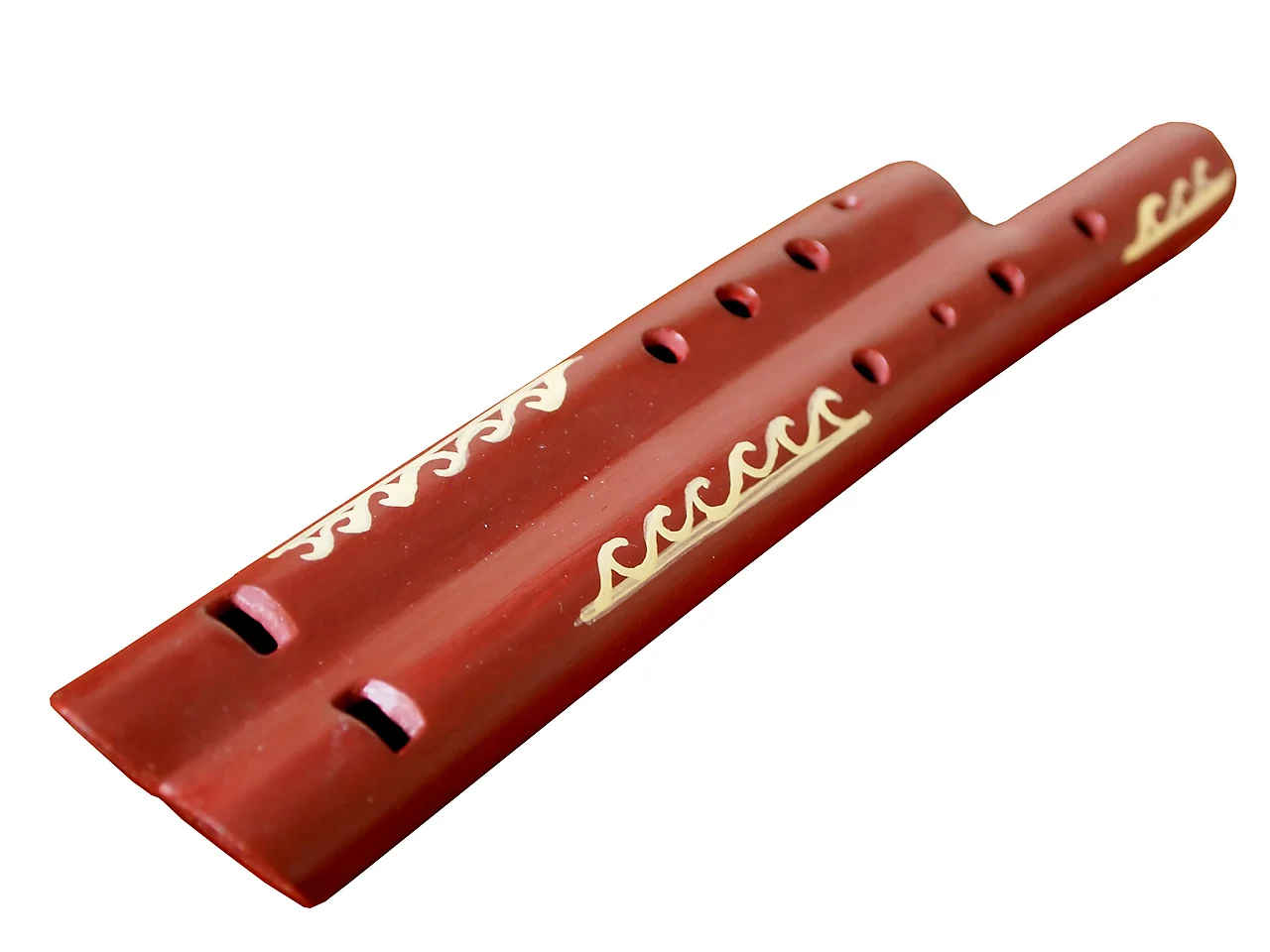Gaita
Woodwinds
Africa
Between 0 and 1000 AD
Video
The Gaita is a traditional wind instrument belonging to the bagpipe family, commonly played in various regions of Spain, Portugal, and parts of Latin America. It consists of a bag, a blowpipe, a chanter (melody pipe), and at least one drone, which produces a continuous sound. This instrument is widely associated with folk and traditional music and plays a significant role in the cultural expressions of the regions where it is found.
It is classified as an aerophone, a category of wind instruments in which sound is produced by the vibration of air without the use of strings or membranes. Specifically, it falls under the subgroup of bagpipes, as it utilizes an air reservoir (bag) to maintain a continuous airflow, allowing for a sustained and uninterrupted melody.
History
The Gaita has deep historical roots that trace back to ancient times. The earliest forms of bagpipes date back to the first millennium BC and were found across various cultures, including the Middle East, North Africa, and Europe. The instrument is believed to have been introduced to the Iberian Peninsula by the Romans or earlier through Celtic migrations.
The Gaita, as it is known today, emerged in the medieval period and became a staple of folk music in different regions of Spain, such as Galicia, Asturias, and Castile. The instrument also made its way to Portugal and Latin America through Spanish and Portuguese colonization. By the 18th and 19th centuries, distinct regional variations of the Gaita had developed, each with unique tonal qualities and playing techniques.
Materials Used in Construction
The traditional Gaita is made using natural materials, with slight variations depending on the region. The main components are:
Typically crafted from animal hide (such as goat or sheep skin) or synthetic materials in modern versions. It is made from wood, such as boxwood, ebony, or other dense hardwoods, with a reed to produce sound. Also made from wood, these pipes produce a continuous harmonic background. Often made from wood or plastic, it allows the player to inflate the bag with air. Usually made from cane, double or single reeds are used to create the vibration necessary for sound production.
Types of Gaita
There are several variations of the Gaita, each associated with a specific region and possessing unique characteristics. Some of the most notable types include:
Gaita Gallega: Found in Galicia, Spain, this version has a distinctively bright tone and often features a single drone.
Gaita Asturiana: Played in Asturias, Spain, this type generally has a larger chanter and produces a deeper sound compared to the Galician version.
Gaita de Boto: A type found in the Aragon region of Spain, featuring a more complex system of drones.
Gaita Cabreiresa: A lesser-known variety from León, Spain, with unique melodic characteristics.
Gaita Zuliana: Popular in Venezuela, particularly in the Zulia region, though it differs from the Iberian bagpipes and is more of a fipple flute.
Characteristics
The Gaita is a traditional bagpipe found in various regions of Spain and Latin America, particularly in Galicia, Asturias, and northern Portugal. It consists of a bag (air reservoir) made from animal hide or synthetic materials, a blowpipe for inflating the bag, a chanter (melodic pipe) with finger holes for playing melodies, and one or more drones that produce a continuous harmonic background. The instrument’s tuning, pitch, and number of drones vary by region, with some versions featuring a single drone while others have multiple. Traditionally used in folk and ceremonial music, the Gaita is known for its rich, resonant sound and ornamental playing techniques, including grace notes and rapid articulations. Modern iterations may include synthetic bags and precision-made reeds for greater stability and durability, but the instrument remains deeply connected to its cultural roots.
Sound Production
The Gaita produces sound through the vibration of its reeds when air is forced through them. The player blows air into the bag via the blowpipe, then uses arm pressure to regulate airflow into the chanter and drones. The chanter reed vibrates to create the melody, while the drone reeds vibrate at a fixed pitch, creating a harmonic foundation.
The sound of the Gaita varies depending on the materials used, the number of drones, and the specific tuning of the instrument. Some varieties have a bright and piercing sound, while others are deeper and more resonant. Playing the Gaita requires a combination of breath control, finger dexterity, and rhythmic coordination. The primary techniques include:
Bag Inflation: The player continuously blows air into the bag while maintaining even pressure.
Finger Techniques: The melody is played using a system of open and closed fingerings on the chanter.
Pressure Control: The player must regulate bag pressure to ensure consistent pitch and tone.
Ornamentation: Trills, cuts, and rolls are used to add complexity and expressiveness to the music.
Tuning Adjustments: Some varieties of Gaita allow for tuning modifications by adjusting the drone length or reeds.
Role in Music
The Gaita is a traditional bagpipe widely played in regions such as Spain, Portugal, and parts of Latin America, with each region having its own distinct variation. It holds a significant place in folk and ceremonial music, often used in festivals, processions, and dance performances. The instrument consists of a bag (air reservoir), a chanter (melody pipe), and one or more drones that produce a continuous harmonic background. In Galicia and Asturias (Spain), the Gaita is central to Celtic-inspired folk music, played in both solo and ensemble settings. In Colombia and Venezuela, however, the term “Gaita” refers to a different flute-like instrument used in traditional cumbia and gaita music. With its rich, reedy sound, the Gaita has influenced both classical and contemporary folk music, ensuring its cultural relevance and continued popularity.
Cultural Significance
The Gaita holds immense cultural importance in the regions where it is played. In Galicia and Asturias, it is a national symbol of heritage and identity, frequently used in festivals, folk gatherings, and even official events. The instrument is also linked to historical and ancestral traditions, passed down through generations.
In Venezuela, the term “Gaita” refers to a genre of folk music rather than the bagpipe itself, showing how the name evolved in different cultural contexts. This demonstrates the instrument’s adaptability and lasting impact on musical traditions worldwide.
It remains a cherished musical instrument that continues to inspire musicians and audiences alike, bridging the past with the present through its distinctive and powerful sound.
FAQ
What is the history of the Gaita musical instrument?
The Gaita is a traditional bagpipe from Spain and Latin America, with roots dating back to the Middle Ages. It is most commonly associated with regions like Galicia and Asturias. Over centuries, it evolved in construction and sound, becoming a cultural symbol. Variants of the Gaita also exist in Colombia and Venezuela.
How is the Gaita used in music?
The Gaita is used in folk music, festivals, and traditional celebrations, particularly in Spain and South America. It is often played with percussion and other instruments to create lively dance tunes. In Colombia and Venezuela, the Gaita is linked to regional styles like Gaita Zuliana. Modern musicians also incorporate it into contemporary genres.
What are the features of the Gaita?
The Gaita consists of a bag, chanter, and one or more drones, similar to other bagpipes. It is made from materials like wood, leather, and reeds, giving it a distinctive sound. The tuning varies by region, with Galician Gaitas often in C or D. Its expressive, reedy tone makes it suitable for both solo and ensemble performances.
 Links
Links
References
Other Instrument
Categories



















